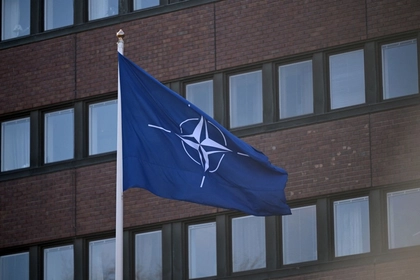In a naval defeat of historical proportions, Russia’s Black Sea Fleet (BSF) has evacuated almost all of its warships from the Sevastopol naval base in occupied Crimea and moved them to what it considers to be safer ports on the Russian mainland out of reach of Kyiv missile and drone strikes.
Satellite images published by open-source naval observers such as MT Anderson show that at least ten major fighting vessels that were previously stationed in Russia’s massive Sevastopol naval base are now moored at piers in the smaller port Novorossiysk, in Russia’s Kuban region.
JOIN US ON TELEGRAM
Follow our coverage of the war on the @Kyivpost_official.
The imagery suggests the Kremlin has indefinitely ended the use of the strategically located Crimean peninsula as its Black Sea base. Major BSF vessels identified in Novorossiysk include two missile-carrying frigates, three missile-carrying submarines, and five amphibious assault ships.
🇷🇺BSF: NOVOROSSIYSK🇷🇺
— MT Anderson (@MT_Anderson) October 2, 2023
0.5M📷 from 1 Oct 2023. If ever there were a good time to hit Novo...
2x Grigorovich
1x Krivak
URSA MAJOR (back from Tartus, still loaded)
all in close proximity + ⬇️⬇️
3x KILO
3x Ropucha
1x Pr. 22160
1x Pr. 21631
1x Ivan Gren
1x Alligator pic.twitter.com/35pCVEHEwo
Six smaller missile boats and several auxiliary ships were reported to have left Sevastopol and are now based in the civilian port of Feodosia, about 150 kilometers east of Sevastopol. Novorossiysk is on the eastern Black Sea coast about 350 kilometers east of Sevastopol.
David Kezerashvili, who served as Georgia’s defense minister during the 2008 Russian invasion, said: “Ukraine has been hugely successful at targeting Russia’s navy in Crimea, with the result being that the Kremlin now feels it needs to relocate.”

Another Successful Ukrainian ATACMS Strike on a Crimean Airfield
Ukrainian media first spotted Russian warships withdrawing from Sevastopol, most of which later appeared in Novorossiysk, on Sep. 22-23.
The Kremlin’s effective abandonment of Sevastopol’s naval facilities followed a series of devastating Ukrainian missile and drone strikes against shore defenses and port infrastructure in recent weeks.
Among the most spectacular was a Ukrainian special forces raid on Aug. 24 which hit an early-warning radar and an S-400 air defense system on the Crimea’s extreme western shore near Cape Tarankhut.
A Sept. 13 strike by at least eight Anglo-French precision-guided cruise missiles exploited a gap created in Russian air defenses over Crimean air space to hit Sevastopol’s naval base, targeting warships tied up in military drydocks.
Although the Kremlin has claimed the damage will all be repaired, independent analysts have generally concluded that Ukrainian missiles effectively destroyed a missile-carrying submarine and an amphibious assault ship, and rendered all three of the BSF’s drydocks incapable of undertaking major ship repairs for months.
A follow-up cruise missile strike on Sept. 22 blasted the BSF’s headquarters in Sevastopol, detonating inside the building while, according to both Russian and Ukrainian news reports, a senior BSF staff meeting was in progress. At least 60 Russian staff and command officers were killed in the strike and dozens more injured, most reports said.
Since Russia’s February 24, 2022 invasion of Ukraine, the BSF lost one of its original five major warships – significantly, its flagship the cruiser Moskva to an April 2022 Ukrainian anti-ship missile strike. Other Russian fleet elements known to have been sunk, destroyed or put out of action for months include at least two more heavy amphibious assault ships, a pair of landing ships, a rescue tug, a missile-armed corvette, and a minesweeper.
Abandoning the Sevastopol base is a tacit signal of acknowledgment by the Kremlin that it can no longer protect its fleet in its main Crimea base. With the Russian navy now forced to operate hundreds of kilometers further away from Ukraine, its ability to interfere with Ukrainian civilian grain exports from the ports of Odesa and Chernomorsk, or to use ship-based missiles to bombard Ukrainian cities, will be reduced but probably not ended, analysts say.
Aslan Bzhaniya, leader of the renegade Georgian region of Abkhazia, in comments carried by the Russian official news agency “Izvestiya” on Thursday and widely repeated in Russian and Ukrainian media, said Russian authorities plan to compensate for loss of capacity in Sevastopol with the construction of a new naval port in Ochamchire, a former seaside tourist resort, 45 kilometers south of the Abkhazian city of Sukhumi.
Abkhazia, with the strong support of Russian troops and weapons, gained de facto independence from Georgia in fighting which ended in 1993. The war ruined Ochamchire’s waterfront and in doing so devastated Abkhazia’s main cash industry which offered economical seaside vacations to residents of the former Soviet Union.
The Kremlin at the time said it was helping protect ethnic Abkhazians from Georgian attacks. Tbilisi said Moscow instigated the conflict to widen its control in the eastern Black Sea and to undermine Georgian sovereignty.
Imperial Russia annexed Crimea from its native Tartar tribesmen in 1783 and built the BSF home base in Sevastopol in 1804. Putin’s Russian Federation illegally annexed Crimea from independent Ukraine in 2014. At the time Moscow was renting shore basing privileges for its warships from the Ukrainian government.
Putin justified the annexation with arguments that Russia needed total control of the naval facilities in Ukrainian Crimea as a matter of Russian national security.
Kezerashvili has warned the rebasing of Russia’s fleet to ports adjacent to Georgia marked a dangerous broadening of the Russo-Ukraine war, that now threatened regional security thousands of kilometers beyond Ukraine’s borders.
“Putin is also sending a signal to the West that it needs to stay out of Georgia. The nightmare scenario for the West is that Russia starts launching attacks on Ukraine from territory that is legally Georgia’s, or alternatively that Ukraine feels obliged to strike first in Georgia’s direction,” Kezerashvili said.
“There is an urgent need now for the Western allies – the European Union, US and NATO – to act fast to prevent the spread of Russian influence in the region,” he said.
You can also highlight the text and press Ctrl + Enter









